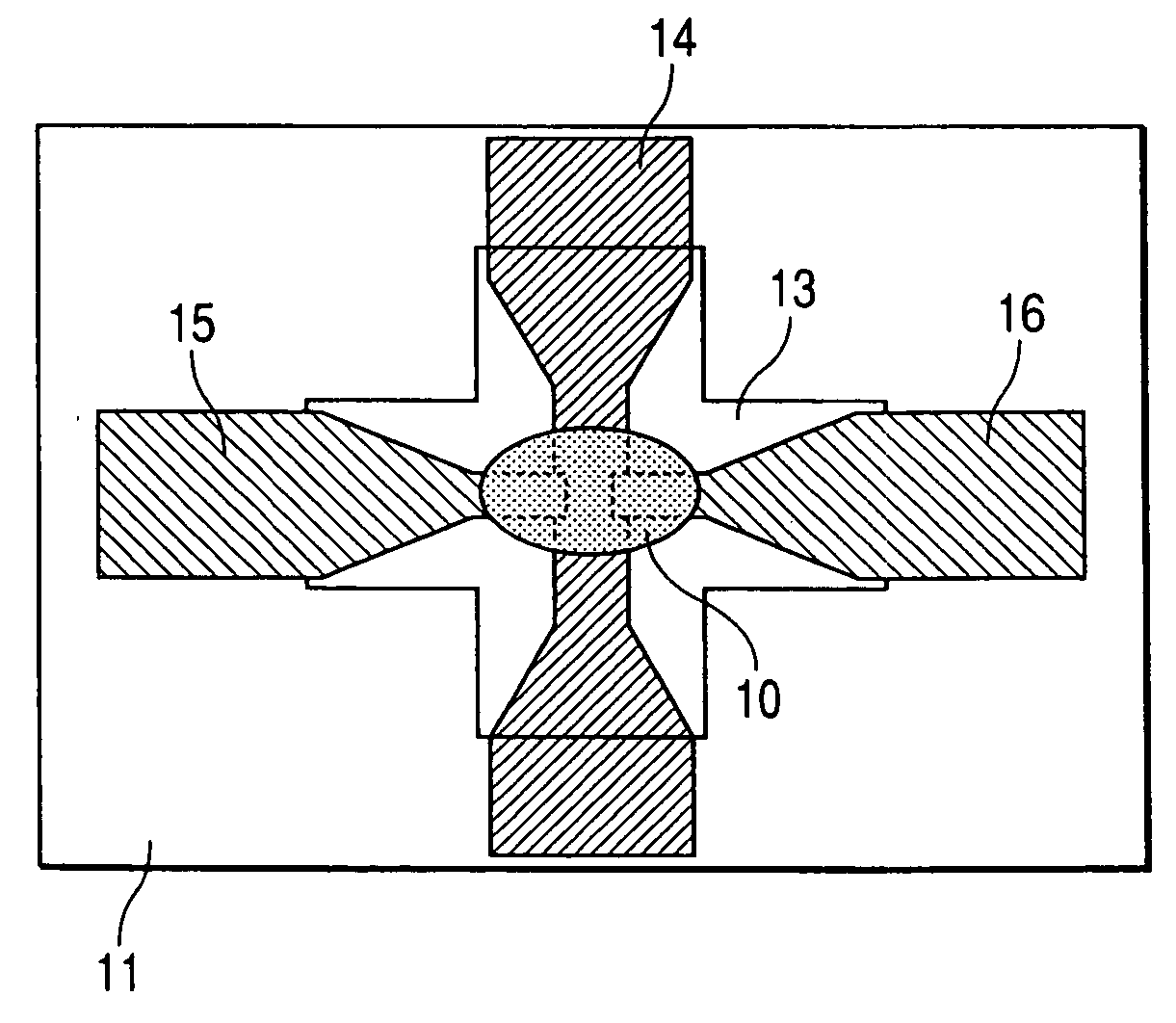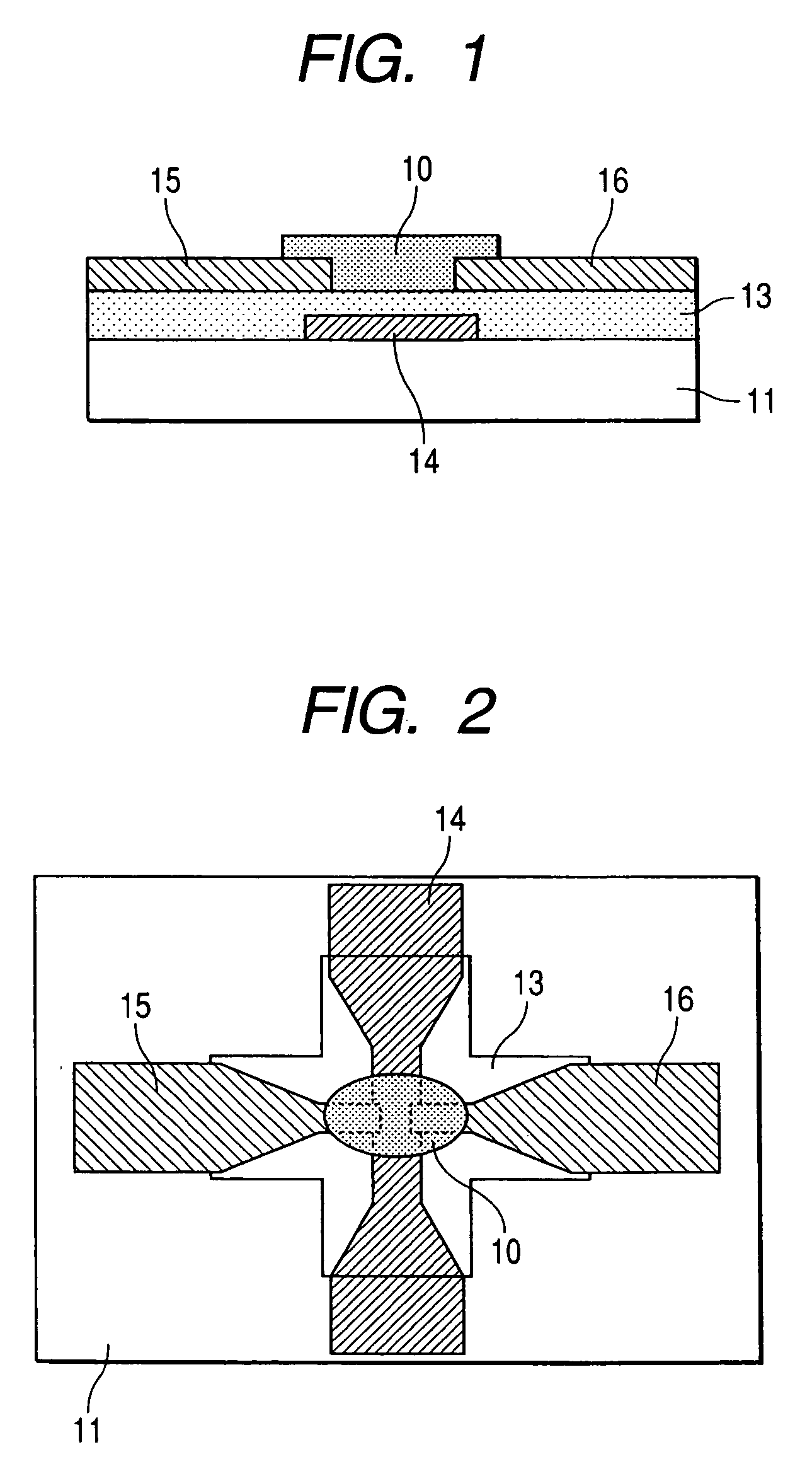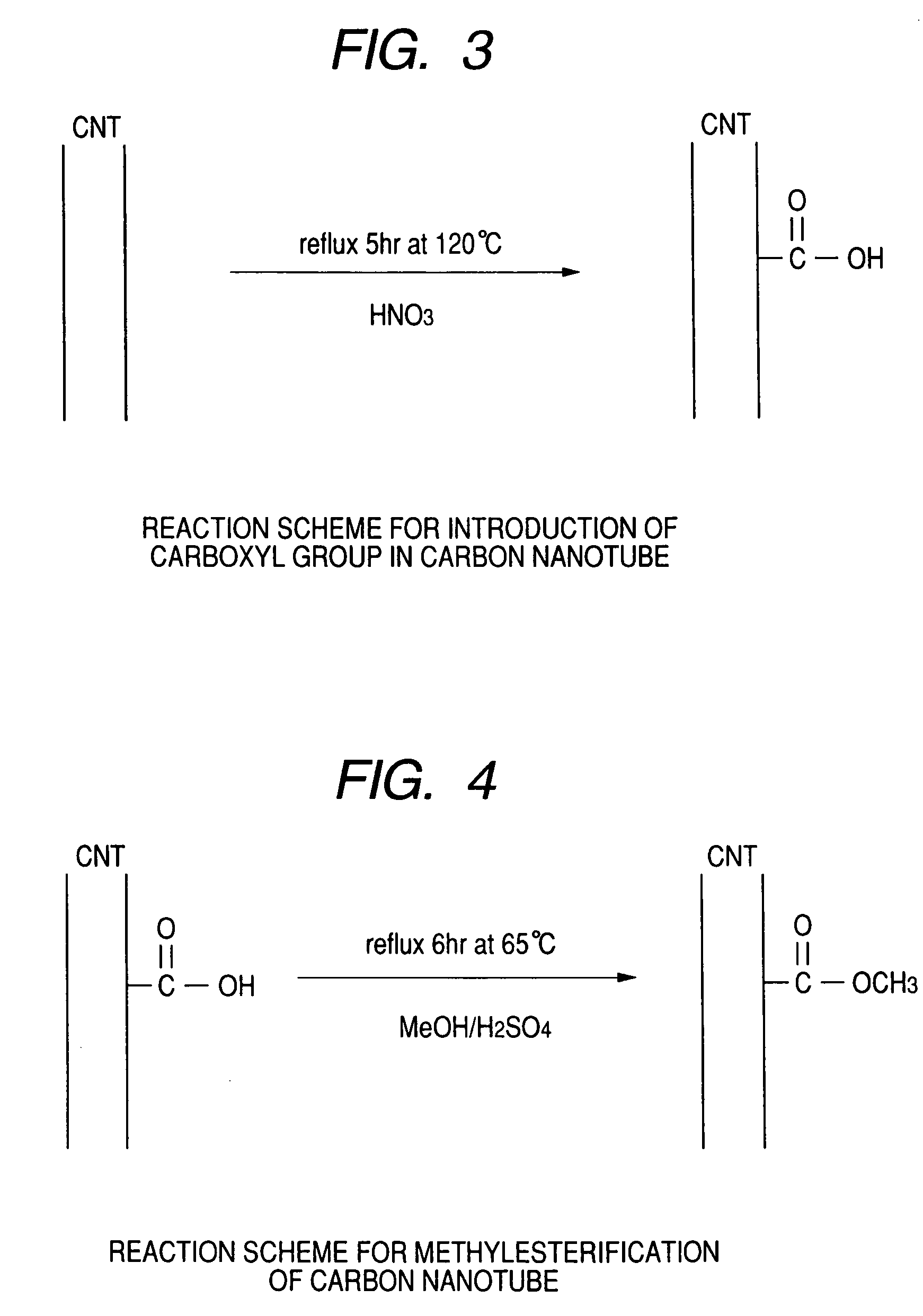Organic-inorganic composite insulating material for electronic element, method of producing same and field-effect transistor comprising same
a technology of composite insulating materials and electronic elements, which is applied in the direction of thermoelectric device junction materials, electrical apparatus, and semiconductor devices. it can solve the problems of difficult to meet all the aforementioned requirements, insulating films made of inorganic materials with high dielectric constants but lack of flexibility, and insulating films made of phenolic resins exhibit relatively high dielectric constants
- Summary
- Abstract
- Description
- Claims
- Application Information
AI Technical Summary
Benefits of technology
Problems solved by technology
Method used
Image
Examples
example 1
[0071] The aforementioned coating solution for PVPh-dried alumina gel insulating film is dropped in an amount of 2 ml onto a PEN film (thickness: 125 μm) over which it is then spread by a spin coating method at 4,000 rpm. Thereafter, the coated material is heated to 90° C. over a hot plate in the atmosphere for 1 hour. Subsequently, the coated material is heated to 180° C. in a nitrogen atmosphere for 2 hours to form an organic-inorganic composite insulating material comprising PVPh-dried alumina gel insulating material (thickness: 500 nm; volume ratio of PVPh in the film: 30%).
example 2
[0072] An insulating film is formed in the same manner as in Example 1 except that as the coating solution for insulating film there is used a coating solution for PVPh-dried titania gel insulating film instead of coating solution for PVPh-dried alumina gel insulating film. Thus, an organic-inorganic composite insulating material comprising PVPh-dried titania gel insulating material (thickness: 400 nm; volume ratio of PVPh in the film: 30%) is formed.
example 3
[0086] Field-effect transistors (TFT) according to embodiments shown in FIGS. 1 and 2 comprising a PVPh-dried alumina gel composite film formed in the same manner as in Example 1 as an insulated gate film 13 are prepared.
[0087] As the transporting layer 10 there is used a semiconductive glycerin crosslinked film of carbon nanotube. As the gate electrode 14 there is used aluminum / gold. As the source electrode 15 and the drain electrode 16 there are each used titanium / gold. In this arrangement, a contact with the transporting layer 10 is formed. As the substrate 11 there is used a PEN film (thickness: 125 μm) which is a flexible substrate.
(1) Purification of Single Layer Carbon Nanotube
[0088] 30 mg of a powder (average particle diameter: 1.5 nm; average length: 2 μm) obtained by sifting a single layer carbon nanotube powder (purity: 40%, produced by Aldrich Inc.) through a sieve (pore diameter: 125 μm) to remove coarse agglomerates is heated to 450° C. in a muffle furnace for 15 m...
PUM
 Login to View More
Login to View More Abstract
Description
Claims
Application Information
 Login to View More
Login to View More - R&D
- Intellectual Property
- Life Sciences
- Materials
- Tech Scout
- Unparalleled Data Quality
- Higher Quality Content
- 60% Fewer Hallucinations
Browse by: Latest US Patents, China's latest patents, Technical Efficacy Thesaurus, Application Domain, Technology Topic, Popular Technical Reports.
© 2025 PatSnap. All rights reserved.Legal|Privacy policy|Modern Slavery Act Transparency Statement|Sitemap|About US| Contact US: help@patsnap.com



